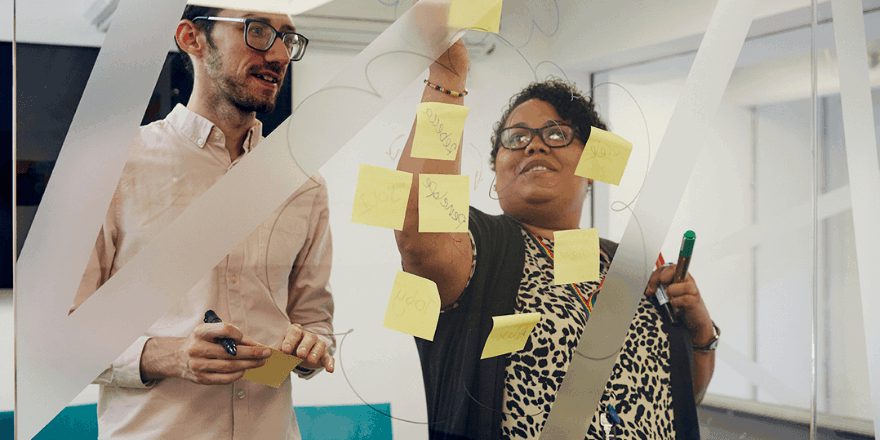Laying down the foundations of an LGBTQ+ network group

Consulting other LGBTQ+ employees
Before making key decisions about the structure or objectives of your network, you should consult other LGBTQ+ employees within your organisation. This will help you at a later stage when you request formal support for your network group – you’ll be able to demonstrate that there’s interest from across the organisation.
This is particularly important if you work in a large organisation with employees in multiple locations or with vastly different day-to-day roles. Taking the time to understand the needs of someone who works part-time, or whose job is more client facing than yours, allows you to create a network that supports all LGBTQ+ employees. You should also always actively consult, listen to and support LGBTQ+ colleagues whose identities are different from yours.
Anonymous surveys and focus groups are both effective ways to consult other employees. They give you the opportunity to ask key questions about how the network group should be run, while allowing your colleagues to raise new ideas or issues you may not have considered.
Creating an operational structure
LGBTQ+ employee network groups can operate in many ways and often look completely different from organisation to organisation. Your organisation might be centralised in one office, or have a dispersed workforce based across the country or the world. This will affect your network group structure.
Some networks operate online, while others choose to have monthly in-person meetings. Some network groups simply have one person in charge of chairing meetings and handling administrative tasks, while others have a large elected committee. Those elected committees can include various operational roles and representatives for members whose identities are sometimes excluded from LGBTQ+ communities. This can include bi and trans members, or members who are women, disabled, or people of colour.
Understanding the specific circumstances of your network group and the needs of your members will help you create an operational structure that’s appropriate for the scope of activity your network will carry out.
For more suggestions and guidance on activities and initiatives you can run as a network group to create a more LGBTQ+ inclusive workplace environment, refer to Stonewall’s ‘Finding your collective voice’ resource available exclusively for Diversity Champions.
Clarifying your aims and objectives
Aims and objectives are specific targets and goals for the network to achieve within the next year. Setting clear aims and objectives right from the start will help you build an effective network that achieves its goals.
Your aims and objectives can relate to anything from organising a fundraising event, to changing a particular piece of policy, or simply how many network group meetings should be held in the next year.
They should be tangible and measurable. Depending on the size or structure of your network, these objectives may be broken down into roles and tasks assigned to specific network members.

